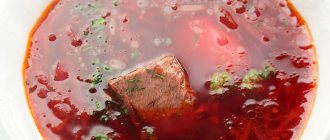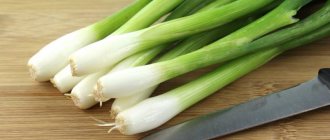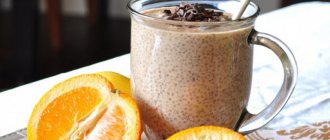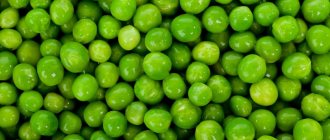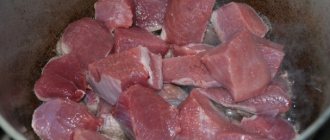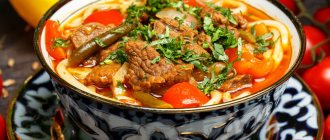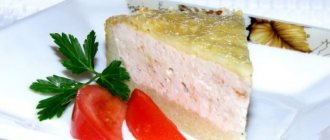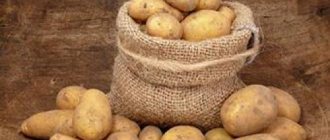The history of borscht in Rus' goes back hundreds of years. Almost as many historians have debated where this hot dish came from. The Slavs attribute its invention to themselves, but borscht was also eaten in Ancient Rome and Greece.
According to another version, the current name for the familiar red soup was given by the Cossacks. Now it is no longer possible to establish exactly where our traditional borscht came from. The main thing is that this food is not only very tasty, but also healthy. The recipe may vary depending on the region; each country has its own special composition of products.
The benefits and harms of cold borscht with beets
It is more correct to call such borscht beetroot soup, since it can be served both hot and cold. It is correct to first prepare beet broth from young vegetables, and then pour it over other vegetables. The important thing is that beet soup is cooked without meat and is healthier than meat broth.
Read: Benefits of live oatmeal jelly
Cold borscht contains:
- vitamin A, necessary for the normal functioning of the reproductive system, maintaining immunity, healthy skin and eyes;
- cobalt, responsible for enzyme activation and folic acid metabolism;
- folic acid, beneficial for women's health;
- vitamins B, C and E;
- phosphorus and magnesium, necessary for the nervous system;
- calcium, potassium for bone health.
Beets are a good and mild colon cleanser due to their high fiber content. Regular consumption of cold beetroot helps cleanse the liver of heavy metals, toxins and waste accumulated during the processing of not very healthy food products.
If there are stones in the gall bladder, then cold borscht with beets will help remove them gently and naturally.
Beets are also useful for:
- acidosis and acid-base balance disorders;
- for blood purification;
- for anemia, since beets contain a lot of iron;
- macular degeneration due to the high content of lutein and zeaxanthin.
Beets are also famous for their cell aging-slowing properties and are an excellent natural energy booster.
Usually there is no harm from cold beetroot. The only exceptions are cases of individual intolerance to beets or other components. For gastritis and stomach ulcers, you need to make the dish lean and without frying, and also add less hot spices, pepper and garlic.
Video on the topic:
Step-by-step recipe with photos:
- First we prepare the broth. Wash the meat and cut into medium pieces. Place in a saucepan, add water and cook until tender, about 2 hours. (Remember to skim off the foam after the broth boils and then reduce the heat).
- Boil the eggs, cut them into small pieces.
- While the meat is cooking, prepare the vegetables. We wash and clean them. Finely chop the onion and grate the carrots on a coarse grater.

- Making borscht dressing. Fry the onion in a frying pan until golden brown with a small amount of vegetable oil. Add carrots, cook until soft and pour in tomato. Simmer for 10-15 minutes until thick over low heat. Salt and pepper to taste, add 1 teaspoon of sugar.
- Peel the potatoes and cut into medium cubes.
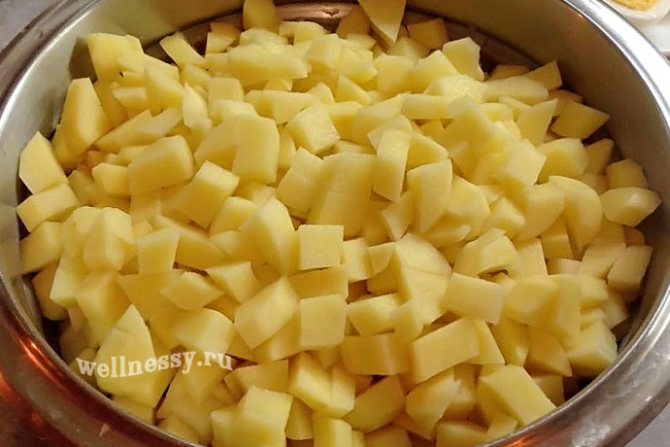
- Wash the sorrel, spinach and other greens. We cut everything finely.
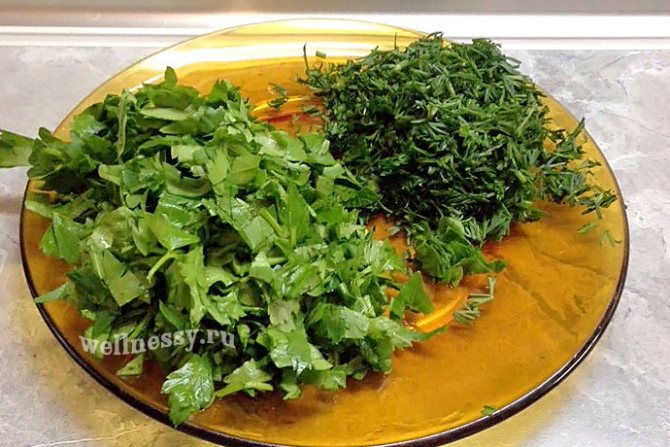
- When the meat is cooked, add the potatoes and cook for 10 minutes.
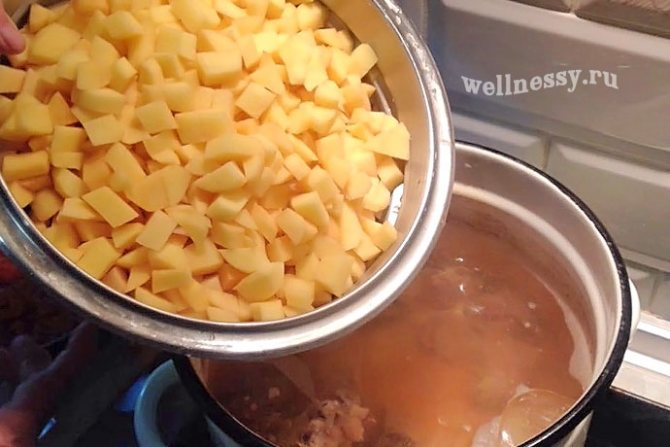
- Then add borscht dressing, eggs, sorrel and the rest of the herbs. Salt and pepper to taste. Boil for another 10 minutes. Let the green borscht brew.
We eat it hot with sour cream. Bon appetit!

The benefits and harms of borscht without meat
Traditional borscht involves using pork or beef broth as a base. But such a product is difficult to digest even for a healthy stomach. In addition, all the harmful substances used in raising animals get into the broth from meat: hormones, antibiotics, growth stimulants. Therefore, for those who, for health reasons, cannot eat such a dish, as well as as a fasting meal and during fasting, it is better to cook borscht without meat. It is made in the same way as a regular one, but it has much more useful properties.
Read: The benefits of bread kvass without yeast
In order not to deprive yourself of protein, you can cook borscht with mushrooms, beans or soy. The degree of usefulness of lean borscht is determined by the vegetables and herbs it contains. In any case, such borscht gives:
- a surge of energy and strength;
- unloading the stomach and intestines;
- feeling full after eating.
There can be no harm from such a dish, unless a person has difficulty digesting beans or mushrooms. Then these components need to be excluded. And, of course, it is important not to overeat even healthy foods.
Video on the topic:
Calorie content of green borscht (sorrel) (all types):
Green sorrel borscht with beef Specify quantity:. Green sorrel borscht with beef Specify quantity: Proteins Fats Carbohydrates Calories g ml pcs stack container.
Consumption calculators calculate various daily norms - water, calories, proteins, carbohydrates, fats and determine metabolism. Calculator to calculate the number of calories you should consume per day to achieve your desired weight. Calculator for calculating in grams the amount of protein, fat and carbohydrates that should be consumed per day. Zigzag calorie calculator - the number of calories is different on different days, helps to shift weight. Calendar of weight loss or weight gain by day, indicating the planned weight for each day during the calorie diet.
Ingredients borscht with sorrel and eggs Sorrel Poaching g Hard-boiled chicken egg g Potatoes Boiling without draining g Carrots, yellow Sauteing g Onions Sautéing g Table salt 15 g Suneli hops 10 g pork broth g Green onion Cooking without draining 60 g Water lard 50 g. You can create your own recipe taking into account the loss of vitamins and minerals using the recipe calculator in the “My Healthy Diet” application.
Nutritional value and chemical composition of “borscht with sorrel and eggs.”
Recipe calculator
The table shows the nutrient content of calories, proteins, fats, carbohydrates, vitamins and minerals per gram of edible portion. Recipe calculator. The nutritional value. Serving size g.
The benefits and harms of sorrel borscht
In the classical sense, sorrel borscht is more of a soup, since it does not contain beets. The recipe involves using a large number of sorrel leaves, and the finished dish goes well with a boiled chopped egg.
Sorrel contains:
- potassium;
- iron;
- phosphorus;
- magnesium;
- carotene;
- sodium;
- essential oils;
- organic acids;
- tannins;
- resin.
Read: Health benefits of shrimp
Eating this plant:
- activates the liver;
- improves digestion;
- increases appetite;
- stops bleeding;
- stops diarrhea;
- cleanses the blood;
- inhibits the growth of putrefactive bacteria and tumors.
Borscht with sorrel is useful for anemia and anemia, cardiovascular diseases, rheumatism and joint pain.
However, it should not be consumed too much. Due to the large amount of acid, such food can be harmful if:
- gastritis with high acidity;
- kidney and gallstones;
- salt metabolism disorders;
- increased blood clotting;
- thrombophlebitis and varicose veins;
- tuberculosis;
- pregnancy.
To neutralize acid, borscht is seasoned with foods high in calcium, such as yogurt, sour milk or full-fat sour cream.
Video on the topic:
How to cook green borscht with sorrel
Green borscht with sorrel is a traditional dish of Belarusian cuisine, perfect for lunch. We will now tell you in detail how to properly cook this magnificent soup and deliciously prepare green borscht with sorrel.
Step 1.
This recipe is based on chicken broth, although traditionally it is cooked with beef or pork. Chicken will make the dish dietary. To do this, you need to remove the skin from the legs and cut them into two parts. Add 1 whole onion, carrot, and bay leaf, add water and put on fire. When it boils, collect the foam, then cook slowly until the meat is completely cooked.
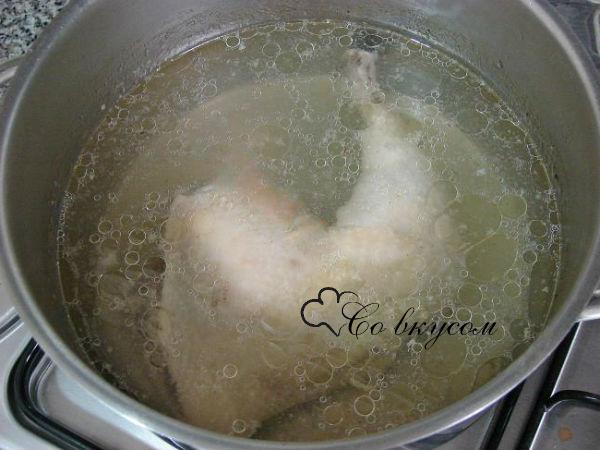
Step 2.
While preparing the broth, you can make the dressing. To do this: grate the remaining carrots, finely chop the onion, add vegetable oil and fry it all in a frying pan until the onion reaches a golden color.
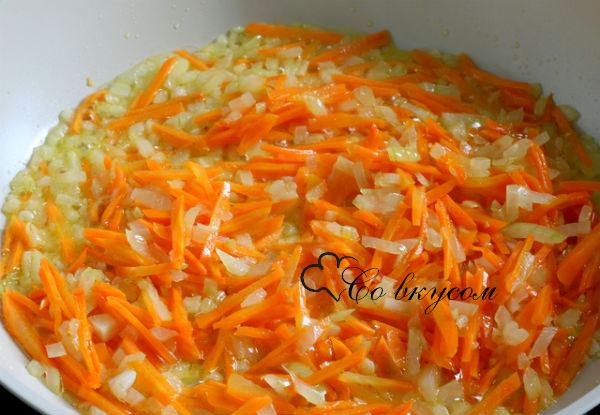
Step 3.
Cut the potatoes into small cubes. Finely chop the pre-boiled hard-boiled eggs and chop the greens.
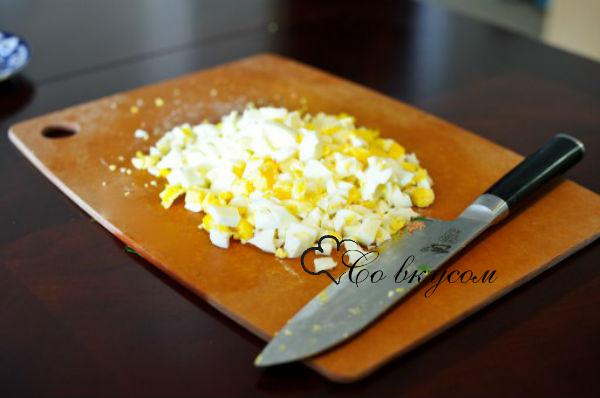
Step 4.
Remove the cooked carrots, legs and onions from the broth, strain the broth, add potatoes, salt and cook over low heat for 7-8 minutes. Discard cooked onions and carrots.
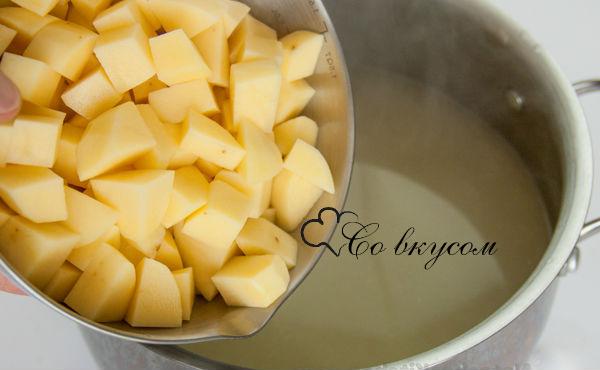
Step 5.
Remove the meat from the bones and cut into small strips. When the potatoes are almost cooked, add meat, eggs and dressing. After boiling, cook over low heat for three minutes.

Step 6.
Add chopped herbs, optionally, citric acid, black pepper, mix everything, let it boil and turn off the heat. Let it brew for a while.

Green borscht with sorrel can be served with sour cream.
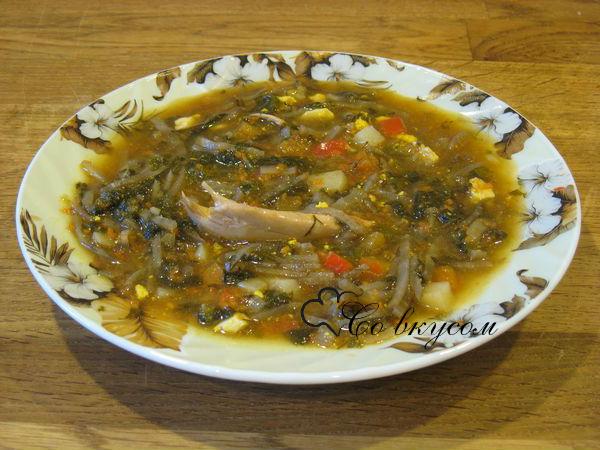
Detailed composition, per 100 grams of the finished dish: “Soup with sorrel (green borscht)”
| compound | quantity | product with the highest content |
| Proteins, g | 7.44 | chicken (63%) |
| Fats, g | 6.39 | chicken (74%) |
| Carbohydrates, g | 7.52 | potatoes (83%) |
| Calorie content, kcal | 115.49 | chicken (53%) |
| Water, g | 76.35 | potatoes (39%) |
| Vanadium, mcg | 57.75 | potatoes (100%) |
| Vitamin A, mg | 0.52 | sorrel (73%) |
| Vitamin B1, mg | 0.09 | potatoes (39%) |
| Vitamin B12, mcg | 0.21 | chicken (71%) |
| Vitamin B2, mg | 0.15 | chicken (34%) |
| Vitamin B5, mg | — | — |
| Vitamin B6, mg | 0.27 | chicken (47%) |
| Vitamin B9, mcg | 7.15 | potatoes (43%) |
| Vitamin C, mg | 22.63 | potatoes (34%) |
| Vitamin D, mcg | 0.26 | chicken egg (100%) |
| Vitamin E, mg | 0.33 | chicken egg (72%) |
| Vitamin H, mcg | 5.07 | chicken (50%) |
| Vitamin PP, mg | 1.57 | chicken (60%) |
| Aluminum, µg | 333.33 | potatoes (100%) |
| Boron, µg | 44.57 | potatoes (100%) |
| Iron, mg | 1.86 | chicken (41%) |
| Ash, g | 1.14 | potatoes (37%) |
| Iodine, mcg | 5.91 | chicken egg (41%) |
| Potassium, mg | 390.77 | potatoes (56%) |
| Calcium, mg | 39.26 | dill (44%) |
| Cobalt, µg | 6.25 | chicken (49%) |
| Starch, g | 5.83 | potatoes (99%) |
| Silicon, mg | — | — |
| Lithium, mcg | 29.84 | potatoes (100%) |
| Magnesium, mg | 35.95 | sorrel (36%) |
| Manganese, mcg | 74.32 | potatoes (88%) |
| Copper, µg | 83.98 | potatoes (64%) |
| Molybdenum, mcg | 3.82 | potatoes (80%) |
| Mono- and disaccharides, g | 1.50 | potatoes (33%) |
| Sodium, mg | 52.29 | chicken (54%) |
| Unsaturated fatty acids, g | 0.42 | chicken egg (85%) |
| Nickel, µg | 1.93 | potatoes (100%) |
| Tin, µg | — | — |
| Organic acids, g | 0.19 | sorrel (56%) |
| Dietary fiber, g | 0.94 | potatoes (57%) |
| Rubidium, mcg | 193.79 | potatoes (100%) |
| Selenium, mcg | — | — |
| Sulfur, mg | 81.83 | chicken (58%) |
| Strontium, mcg | — | — |
| Titanium, µg | — | — |
| Phosphorus, mg | 125.87 | chicken (46%) |
| Fluorine, mcg | 51.89 | chicken (64%) |
| Chlorine, mg | 61.32 | potatoes (36%) |
| Cholesterol, mg | 69.22 | chicken egg (100%) |
| Choline, mg | 50.12 | chicken egg (60%) |
| Chromium, µg | 6.68 | potatoes (57%) |
| Zinc, mcg | 805.34 | chicken (65%) |
| Glycemic index, | 29.45 | potatoes (92%) |
| view: detail | briefly | carbohydrates | calories |

